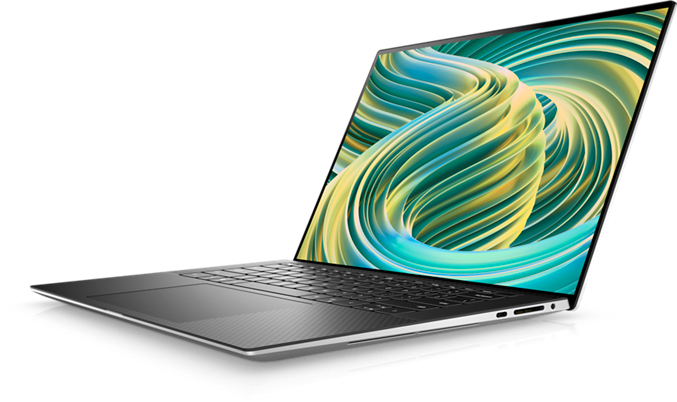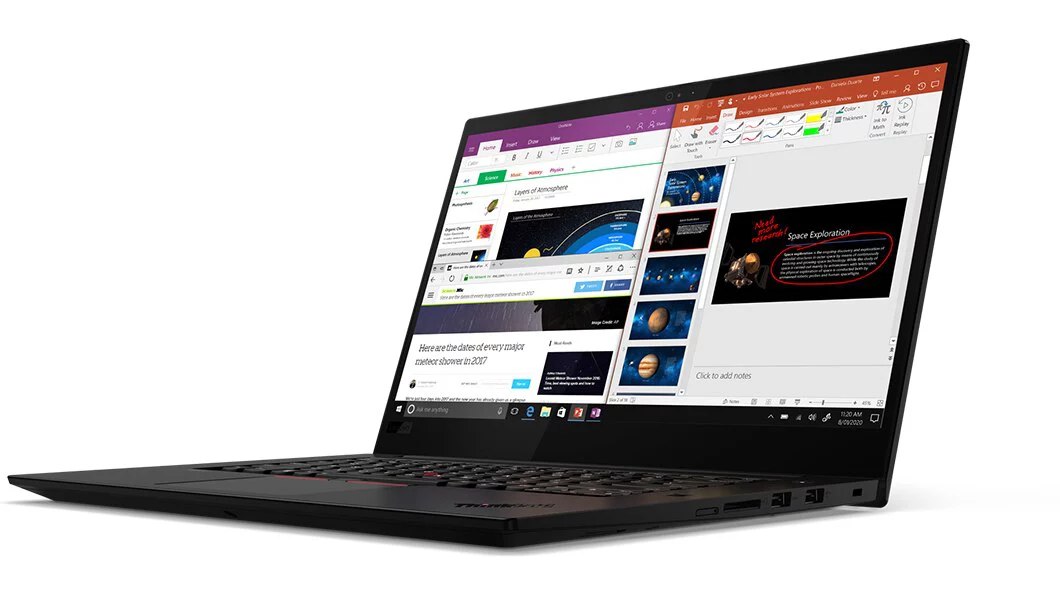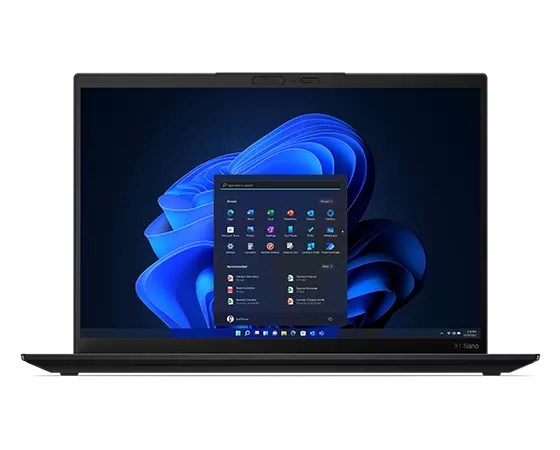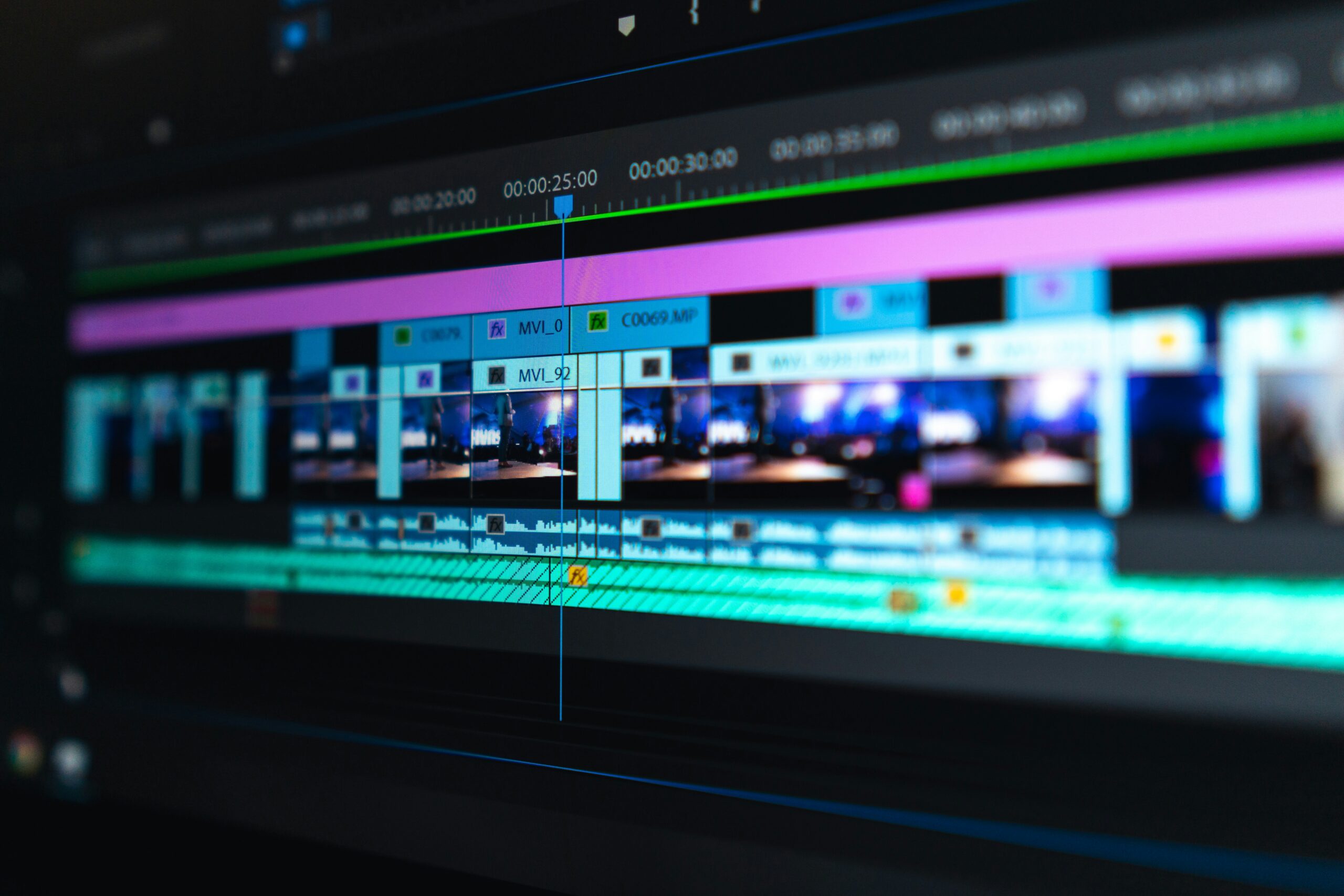The tools you choose can significantly impact the quality and efficiency of your work. This is particularly true for video editing, a process that demands not only creativity but also the horsepower to bring visions to life. Selecting the right laptop for video editing is about finding the perfect blend of power, display quality, and portability to suit your unique workflow. Whether you’re a professional filmmaker, a content creator, or an enthusiast looking to polish personal projects, the stakes are high in choosing a device that won’t hinder your creative process.
The goal of this article is to navigate you through the sea of options on the market. To help you find your next laptop, we compiled a list of what we thing are the 5 best laptops for video editing.
Why Choose a Laptop for Video Editing?
Traditionally, desktops have been the go-to for video editing tasks, mainly due to their superior processing power and ease of customization. However, the dynamic nature of today’s video editing demands more flexibility. Here’s where laptops shine:
Mobility: The most evident advantage of using a laptop is the ability to edit video anywhere and anytime. Whether you’re on a film set, traveling, or simply prefer to work in different settings, a laptop’s portability is invaluable.
Space-saving: Not everyone has the luxury of a dedicated studio or office space. Laptops take up minimal room and can be easily stowed away when not in use, making them ideal for small workspaces.
Editing on location: For professionals who need to edit in the field or present projects to clients on the go, laptops are indispensable. They allow for immediate editing and playback, crucial for projects with tight deadlines or those requiring quick revisions.
Key Features to Consider
When scouting for the best laptop for editing videos, certain specifications and features take precedence. Here’s a breakdown of what to look for:
Processor Power and Speed
The heart of any video editing laptop is its CPU. A high-performance processor is crucial for efficiently handling high-resolution video files, complex sequences, and effects. Look for laptops with multi-core processors (Intel Core i7/i9 or AMD Ryzen 7/9) that offer high clock speeds and support multithreading. These features significantly reduce rendering and encoding times, making your video editing workflow smoother and more productive, especially when editing footage.
RAM Requirements
RAM is where your computer stores its short-term data. In video editing, ample RAM is essential for a seamless editing experience, especially when working with 4K content or complex projects with multiple tracks and effects. Ideally, aim for at least 16GB of RAM. However, for more demanding tasks or future-proofing your investment, 32GB or more is recommended.
Storage Solutions
Video files are notoriously large, especially with the increasing prevalence of 4K and 8K content. Solid State Drives (SSDs) are preferred over Hard Disk Drives (HDDs) for video editing because they offer faster read/write speeds, which means quicker file transfers and shorter loading times. Look for laptops with at least 512GB of SSD storage or consider models that combine a smaller SSD (for your operating system and software) with a larger HDD (for storing raw footage).
Display Quality
A high-quality display is pivotal for video editing. You’ll want a laptop with a screen that offers excellent color accuracy, high resolution, and a sizeable workspace. Look for displays covering a wide color gamut (such as Adobe RGB or DCI-P3) and offering HDR support for the most accurate color representation. A resolution of at least 1080p is standard, but 4K is ideal for professional-grade work. Screen size is a balance between portability and usability; a 15-inch display strikes a good balance, though some may prefer the immersion of a 17-inch screen.
Graphics Performance
While the CPU is crucial, a dedicated graphics card (GPU) significantly enhances video editing and rendering performance. Gaming laptops, known for their powerful components and high graphic fidelity, are particularly suitable for resource-intensive tasks like video editing. GPUs accelerate tasks such as video playback, effects rendering, and color grading. For most video editing needs, a mid-range GPU like the NVIDIA GeForce RTX 3060 or AMD Radeon RX 5600M is sufficient. However, more complex projects or 3D work may benefit from higher-end models.
Battery Life Considerations
Video editing is a power-intensive task, and balancing performance with battery life is challenging. While you shouldn’t expect all-day battery life under heavy use, look for laptops that offer the best compromise between power and efficiency. A laptop that can sustain several hours of editing away from a power source offers greater flexibility for on-the-go work.
Understanding these key features and how they impact video editing is crucial for choosing the right laptop. Next, we will explore the top laptops that meet these criteria, starting with the VAIO SX14.
5 Best Laptops for Video Editing
When it comes to video editing, the right laptop can make all the difference. Below, we’ve curated a list of best video editing laptops that stand out in the realms of power, display, and efficiency.

(Credit: VAIO)
1. VAIO SX14
- Powerful Processor: Equipped with the latest Intel Core i7 processor, it breezes through even the most demanding editing tasks.
- Vivid Display: Features a 14-inch 4K Ultra HD display that offers outstanding color accuracy and detail, essential for precision editing.
- Lightweight and Portable: At just 2.32 pounds, it’s one of the lightest laptops, making it perfect for editors on the move.
- Robust Connectivity: Offers a generous array of ports including USB-C, HDMI, and even VGA, facilitating easy connection to external displays and devices.
- Extended Battery Life: Designed for long editing sessions away from an outlet, offering impressive battery longevity.

(Credit: Apple)
2. MacBook Pro (14-inch and 16-inch)
- M1 Pro or M1 Max Chips: Provides unparalleled processing power, allowing for seamless editing and rendering of complex timelines.
- Liquid Retina XDR Display: The mini-LED screen delivers exceptional dynamic range and color accuracy, ideal for HDR content.
- Studio-Quality Microphones and Speakers: Offers an immersive audio experience for editing, with clear playback that can eliminate the need for external speakers in some cases.
- Massive Storage Options: Available with up to 8TB of SSD storage, ensuring you have plenty of space for all your projects.
- Efficient Cooling System: Keeps performance high without disruptive fan noise, even under load.
- Battery Life: Exceptional battery life, making it perfect for creators on the go.

(Credit: Apple)
- Lightweight and Portable: At just 2.8 pounds, it’s incredibly portable, ideal for students and on-the-go editors.
- Big Screen with Fantastic Color Accuracy: The Retina display offers excellent color accuracy, crucial for photo and video editing.
- Capable Processor: The M1 chip handles lighter workloads and 1080p video editing efficiently.
- Surprisingly Nice Speakers: Delivers good audio quality, which is beneficial for video editing.
- Cost-Effective: A budget-friendly option for those needing a reliable laptop for lighter editing tasks.

(Credit: Dell)
4. Dell XPS 15
- Impressive Screen: The 15.6-inch 4K OLED display is a visual feast, with vivid colors and deep blacks.
- Performance: With up to an Intel Core i9 processor and NVIDIA GeForce RTX 3050 Ti graphics, it handles video editing effortlessly.
- Expansive Storage and RAM: Supports up to 64GB of RAM and 2TB of SSD storage, catering to large video files and multitasking needs.
- Solid Build Quality: The aluminum and carbon fiber body is not only sleek but durable.
- Good Battery Life: Offers a decent balance between performance and longevity, despite the powerful internals.

(Credit: Lenovo)
5. Lenovo ThinkPad X1 Extreme Gen 3
- Advanced Processing Power: Features up to 10th Gen Intel Core i9 processors, making quick work of heavy video editing tasks.
- 4K OLED Touchscreen Display: Ensures precise color correction with its high contrast ratio and color gamut coverage.
- Durable and Secure: Built to withstand rigorous use with advanced security features, ideal for professionals.
- Multiple Ports for Connectivity: Includes two Thunderbolt 3 ports among others, facilitating fast data transfer and peripheral connectivity.
- Customizable: Offers a range of configurations to best suit your video editing needs and budget.

(Credit: ASUS)
- Leading-edge AMD Processor: The AMD Ryzen 9 processor is incredibly efficient, providing ample power for video editing software.
- High-Refresh-Rate Display: While aimed at gamers, the 120Hz display also benefits video editors, especially in playback smoothness.
- Light and Compact: At just 3.5 pounds, it combines portability with the power typically seen in larger laptops.
- Impressive Battery Life: Stands out for its ability to balance high performance with longevity, rare in the realm of high-powered laptops.
- AniMe Matrix Display: Offers a unique personalization feature on the lid, which, while not directly related to editing, is a nice touch for creatives.
Choosing any of these laptops ensures that you have a reliable, high-performing partner for your video editing projects. However, compatibility with your preferred video editing software is also a key factor to consider, which we’ll discuss in the next section.
Understanding Video Editing Software Compatibility
The choice of your video editing laptop goes hand in hand with the software you plan to use. Adobe Premiere Pro, Final Cut Pro, DaVinci Resolve, and Avid Media Composer are among the most popular and powerful video editing suites available today. Each has its system requirements and, in some cases, operating system preferences that can influence your laptop selection. Here’s how to ensure your chosen laptop meets these needs.
Adobe Premiere Pro: As one of the industry standards, Premiere Pro runs on both Windows and macOS. It requires a robust processor (Intel 6th Gen or newer, or AMD equivalent), at least 8GB of RAM (16GB for HD media), and 4GB of GPU VRAM. Most modern laptops designed for video editing exceed these specifications, but it’s crucial to check compatibility, especially with your laptop’s GPU.
Final Cut Pro: Exclusive to macOS, Final Cut Pro is optimized for Apple’s hardware, including the MacBook Pro. It leverages the power of Apple silicon (M1, M1 Pro, M1 Max) to deliver exceptional performance and efficiency. If you’re inclined towards Final Cut Pro, an Apple laptop is your only choice, but rest assured, it’s a powerhouse optimized for video editing.
DaVinci Resolve: Known for its demanding hardware requirements, especially for color grading and effects, DaVinci Resolve benefits from a powerful GPU and ample RAM. The software recommends at least 16GB of RAM (32GB or more for 4K editing) and a dedicated GPU with at least 4GB of VRAM. It’s crucial to choose a laptop with a high-performance graphics card and the ability to expand RAM if necessary.
Avid Media Composer: A favorite among professional film editors, Avid’s software runs best on high-end CPUs with multiple cores, at least 16GB of RAM, and professional-grade GPUs. While it’s compatible with both Windows and macOS, your choice of laptop should prioritize processing power and memory.
Regardless of your preferred editing suite, there are a few universal tips to ensure compatibility and performance:
- Check Software Requirements: Before purchasing, compare your laptop’s specs against the minimum and recommended requirements of your chosen video editing software. Aim for the recommended specifications to future-proof your purchase.
- Consider the Operating System: Some software, like Final Cut Pro, is platform-specific. Your choice of software might dictate whether you opt for a Windows laptop or a MacBook.
- Test Before Committing: If possible, test the software on your chosen laptop model before purchasing. This can be through demos at retail stores or by checking online reviews and user experiences focused on video editing performance.
Additional Considerations
Beyond the primary specifications such as processor power, RAM, and display quality, there are additional factors that can significantly influence your experience with a great video editing laptop. Here’s what else you need to consider before making your purchase.
These factors are crucial for handling video projects effectively.
Connectivity and Ports
For video editors, the ability to connect external devices such as monitors, storage drives, and audio equipment is crucial. Therefore, the variety and quantity of ports on a laptop become important factors. Look for laptops that offer a mix of USB-C (with Thunderbolt 3 or 4 support for high-speed data transfer), USB-A, HDMI, and SD card slots. This range ensures compatibility with a wide array of peripherals and eases the workflow, especially when dealing with large files or multiple external devices.
Cooling and Noise
Video editing can push a laptop’s hardware to its limits, often causing the fans to work overtime. An effective cooling system is essential to prevent overheating and maintain performance, but it shouldn’t be so loud as to distract from your editing process. Reviews and user feedback can provide insight into a laptop’s noise level under load. Some models are designed to minimize noise, even when the CPU and GPU are under heavy stress, which can be a significant advantage for those who value a quiet working environment.

